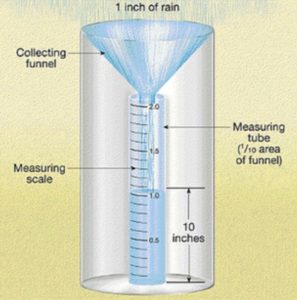Compare the Leading Rain Gauge Models for Accurate and Consistent Readings
Compare the Leading Rain Gauge Models for Accurate and Consistent Readings
Blog Article
Introducing the Science Behind Rain Assesses: Exactly How These Tools Play an Essential Role in Climate Research and Environmental Tracking
Rain gauges, seemingly straightforward devices, hold a profound value in the world of environment research study and ecological tracking. These humble instruments silently accumulate among nature's most important elements-- rainfall. Behind their plain exterior lies a complex scientific research that is indispensable for comprehending the dynamics of our atmosphere. As we peel back the layers of this scientific veil surrounding rainfall evaluates, we uncover a globe where precision, information accuracy, and thorough observation merge to reveal a much deeper understanding of our changing environment and its effect on the world.
Significance of Rain Scales
Rainfall determines play an indispensable duty in monitoring and measuring precipitation levels, offering crucial data for climate research study and evaluation. These devices are essential in evaluating the amount of rains that takes place in a certain location over a specific duration. By gauging and collecting rainwater, rainfall assesses offer valuable insights into the distribution and intensity of precipitation, aiding meteorologists, hydrologists, and climatologists in recognizing weather patterns and trends.
Furthermore, long-term information accumulated from rainfall evaluates assists in analyzing environment change impacts and patterns, contributing substantially to scientific research study and decision-making procedures. In significance, rain evaluates serve as important devices in the area of weather forecasting and ecological science, playing a crucial duty in advancing our understanding of weather and environment dynamics.
Types of Rain Gauges

Capability and Procedure
In the realm of climate study and meteorological studies, the performance of rain assesses lies in their intricate capability and exact operational mechanisms. Rain assesses are created to properly gauge the quantity of rainfall that drops over a particular area throughout a collection duration.
The capability of rainfall evaluates is based upon the concept of collecting and gauging rain this hyperlink in a standard manner. This gathered information is critical for recognizing local weather patterns, tracking long-lasting environment patterns, and assessing environmental impacts. To make sure exact dimensions, rain assesses demand to be strategically put in open locations away from blockages such as buildings or trees that might disrupt the collection procedure.
The operational aspect of rainfall determines involves normal maintenance to protect against debris accumulation, calibration checks to keep measurement accuracy, and information taping for evaluation (rain gauge). Generally, the performance and operation of rainfall evaluates are essential for collecting reliable precipitation information important to climate research and environmental surveillance
Function in Environment Research
Given the essential relevance of precise precipitation measurements in understanding climate patterns and environmental influences, the function of rainfall assesses in climate research study is vital. Rainfall determines offer vital data for environment study by evaluating the quantity of rainfall that drops over a details area during a given duration. This data is essential for checking lasting patterns in precipitation patterns, assessing the influence of environment change on rainfall distribution, and improving climate versions.

Environment researchers use information gathered from rain evaluates to evaluate variants in precipitation levels, identify local climate fads, and assess the efficiency of water source management methods. By contrasting historic rainfall information with existing measurements, researchers can discover shifts in rainfall patterns, such as modifications in the regularity or strength of rainfall occasions. This information is vital for understanding just how climate modification is affecting rainfall characteristics and can help policymakers make informed choices pertaining to adjustment and mitigation techniques.
Applications in Ecological Monitoring
In flooding forecasting, rain scale information helps to track rainfall strength and distribution, permitting authorities to release timely warnings and take essential measures to alleviate flooding risks (rain gauge). Dry spell surveillance relies upon rain scale data to assess moisture degrees in the dirt and track rainfall deficiencies, aiding in the recognition of drought-prone areas and the execution of dry spell action strategies
Moreover, rainfall gauge information plays an important role in water resource administration by supplying info on water schedule and usage trends. In addition, in farming, rainfall gauge data helps farmers in optimizing irrigation timetables, plant choice, and general ranch monitoring techniques based on regional precipitation patterns.
Conclusion
To conclude, rainfall assesses are crucial tools for determining precipitation, offering beneficial data for climate study and environmental tracking. With different kinds and capabilities, rainfall assesses play an important role in understanding rainfall patterns and their influence on the atmosphere. By properly measuring rains, these tools add to the advancement of clinical understanding and assistance in making educated decisions redirected here pertaining to water source administration and calamity preparedness.
Rain gauges play a crucial duty in tracking and gauging precipitation degrees, providing essential data for climate research study and evaluation. The basic rain scale, recognized as the "tipping bucket" gauge, is one of the most generally used tools. Ultrasonic rainfall assesses usage noise waves to discover the existence of rain, providing real-time information on rainfall levels.Environment scientists utilize data collected from rain gauges to evaluate variants in rainfall degrees, determine regional climate fads, and examine the effectiveness of water resource administration techniques.In final thought, rain assesses are essential devices for measuring rainfall, providing important information for climate study and environmental surveillance.
Report this page